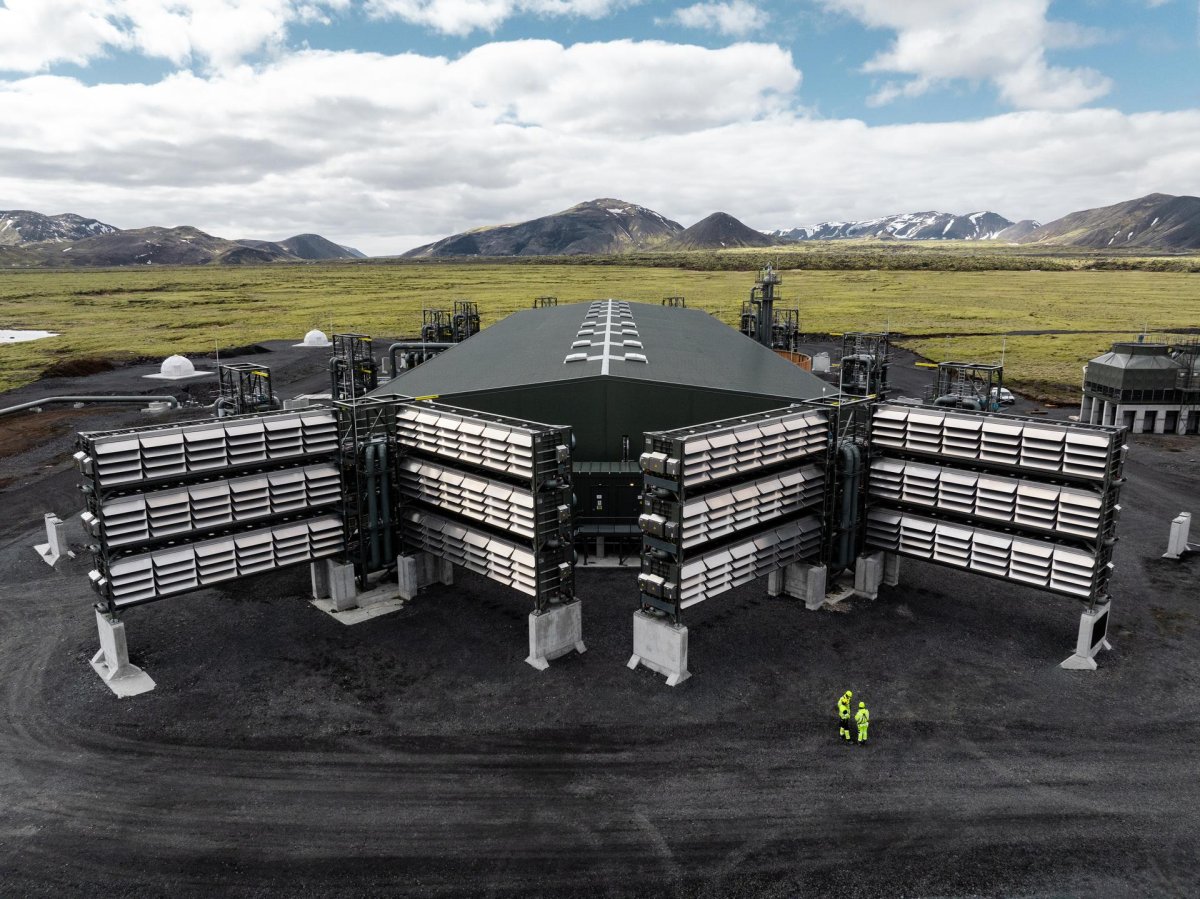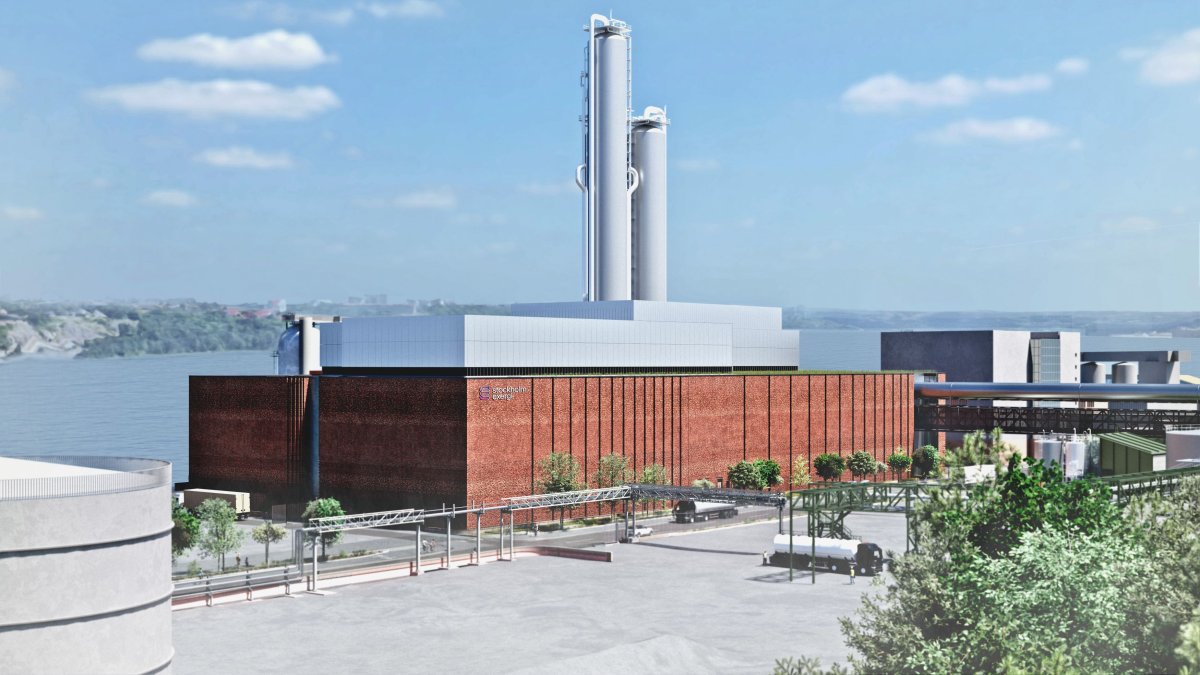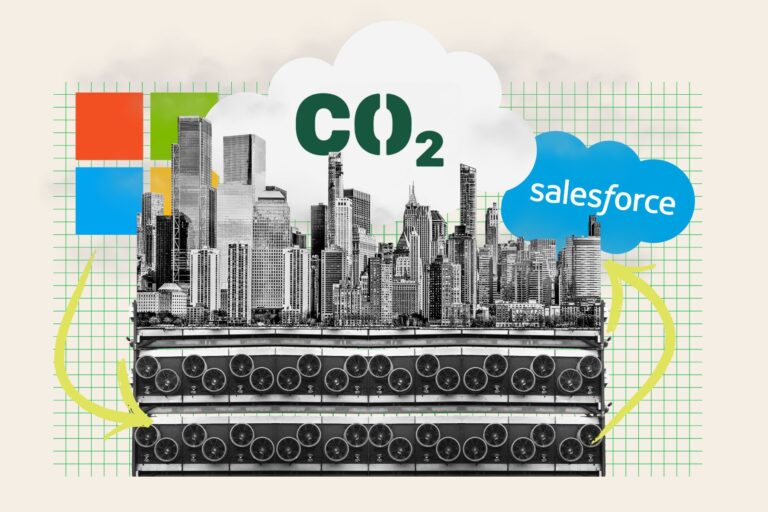On Tuesday, major tech companies including Microsoft and Salesforce announced they would put more money into a range of climate solutions designed to directly remove carbon dioxide from the atmosphere.
The multimillion-dollar investment is the latest effort by tech leaders to boost the small but growing field of carbon dioxide removal (CDR) as they strive to meet ambitious climate goals while consuming vast amounts of energy.
“We need carbon removal as insurance,” said Jamila Yamani, carbon removal lead at Salesforce. NewsweekSalesforce said Tuesday it will invest $25 million in CDR investment firm Frontier to ensure its carbon removal technology is ready when it’s needed.

Photo credit: Newsweek/Getty
“We need to invest now to be able to use it later,” Yamani said.
Other announcements on Tuesday included Frontier’s purchase of roughly $49 million in CDRs on behalf of tech companies and Microsoft’s commitment to buy millions of carbon removal credits for reforestation, in what the company called the world’s largest deal to date.
The funding announced on Tuesday will support reforestation projects in Latin America and adding carbon capture equipment to a biomass energy facility in Sweden, illustrating the broader CDR approach being supported by technology companies.
And it all happened in just one day.
Tech companies have been investing in carbon removal machines that seemed like science fiction only a short time ago but have now grown into commercial applications.
With millions of dollars from tech companies, Switzerland’s Climeworks has developed its carbon removal technology from lab experiments 15 years ago to the world’s largest direct air carbon removal facility, which was unveiled last month.
Climeworks’ Mammoth factory in Iceland is the company’s second commercial-scale facility and uses the country’s abundant, carbon-free geothermal energy to essentially run a very large, sophisticated CO2 vacuum cleaner. The company expects it will extract 36,000 tonnes of CO2 from the air and sequester it underground each year.

Courtesy of Climeworks
Adrian Siegrist, vice president of client solutions at Climeworks, said there are three main reasons why tech companies have been some of the biggest early backers of the company and other CDR practices.
“For one, they’re under a lot of pressure to decarbonize themselves,” Siegrist said. Newsweek“Throughout the AI revolution, that pressure is only increasing.”
Training and running large-scale AI models requires much more computing power, which means more data centers and more electricity to power and cool them. A recent projection by the Electric Power Research Institute suggests that by the end of the century, data centers could consume up to 9% of all electricity produced in the United States, double current usage.
Second, Siegrist said the culture of technology companies is a good match for the pioneering nature of CDR work.
“These companies are used to innovation,” he said, “so it’s natural for them to approach the climate issue with the same lens.”
And third, money. Tech companies have the resources to make things happen while CDR companies are trying to scale. Climate scientists say that in addition to rapidly reducing emissions and increasing clean energy, the world must also find a way to reduce the excess CO2 being pumped into the atmosphere.
“Carbon dioxide removal strategies as a solution to climate change are a very important piece of the puzzle,” said John Larsen, partner at Rhodium Group. NewsweekRhodium, an independent research firm focused on energy and climate change, released a major report on the state of CDR methodologies earlier this year, and its conclusion was that CDR needs to be expanded.
“The United States alone will need to remove about 1 billion tons of carbon dioxide by mid-century,” Larsen said. The Rhodium study found that the U.S. is on track to remove only about 50 million tons of carbon dioxide by 2035.
“We still have a long way to go,” he said.

Courtesy of TIG
The fusion of wood and technology
Rhodium’s carbon removal report covers a wide range of CDR efforts, from nature-based solutions such as forestry and agriculture to the futuristic technologies of Climeworks’ Mammoth Project.
“There are a variety of ways to achieve this,” Larsen said, each with costs, trade-offs and environmental impacts that must be considered.
“Natural solutions tend to be relatively cheap and commercially ready,” he says, but measuring natural pathways to carbon removal can be difficult.
Two of Tuesday’s big announcements were about harnessing nature to reduce carbon dioxide emissions.
Microsoft has signed an agreement with BTG Pactual Timberland Investment Group to acquire up to 8 million naturally-sourced carbon removal credits by 2046. The credits will come from Timberland Investment Group’s $1 billion reforestation efforts in Latin America, the companies said in a statement.
Brian Marrs, senior director of energy markets at Microsoft, said: Newsweek Nature-based solutions are a key part of its climate goals and will account for about half of its CDR purchases, the company said in an email.
“Without nature-based solutions, a smooth transition to a low-carbon economy will not be possible,” he said.
The carbon credit market for forestry projects has been a tough area for many companies, with many projects that plant or protect trees finding they are falling short of climate targets.
“As the market matures, our confidence in this area of carbon dioxide removal is growing,” Maas said.
Environmental NGO Conservation International will provide advice on the environmental impacts of the tree planting and restoration work to ensure it is compatible with other objectives, such as protecting biodiversity.
Microsoft and BTG Pactual are both NewsweekRanking of responsible and trustworthy companies. Brazil-based BTG Pactual is ranked 44th in the Financial Services sector. NewsweekRanking of the world’s most trusted companies. Microsoft ranked 5th in the software and communications category. NewsweekA list of America’s Most Responsible Companies.

Offerings from Frontier and Exergi
Frontier’s latest CDR purchase blends nature and technology.
Frontier was founded in 2022 with the backing of technology companies including Alphabet, Meta, Shopify and Stripe with the goal of supplying demand for the emerging CDR industry.
Hannah Bebbington, head of strategy at Frontier, said: Newsweek The company has just completed a deal with Stockholm Exergi, a company that burns waste wood products to provide heat and energy to the city, under which Exergi will add carbon capture and storage technology to the facility.
“The bioenergy facility will capture all the carbon that would have been emitted and buy it back as carbon removal,” Bebbington explained. Exergy will be able to capture about 800,000 tonnes of carbon per year, and strict oversight by Swedish authorities will ensure the integrity of the carbon removal process, he said.
Salesforce, ranked 35th in the software and communications sector, NewsweekThe company, which is listed on Amazon’s list of “America’s Most Responsible Companies,” said its $25 million investment in Frontier is a step toward reaching its fundraising goal of $100 million.
Salesforce’s Yamani said each CDR project that companies like hers support doesn’t just remove carbon dioxide, it also helps pave the way for a larger carbon removal industry.
“We want to drive innovation at scale and accelerate these technologies,” she said. Other key metrics she will be watching include how many new projects move forward toward commercialization and how many new buyers are persuaded to participate in the CDR market.
Expanding carbon removal
Despite big tech companies’ enthusiasm for CDR projects, the Rhodium report shows that these investments pale in comparison to the scale many scientists say is needed.
“It’s unlikely that the private sector will fully ramp up here,” Rhodium’s Larsen said. “We really recognize the role that additional government policy will play.”
There are some signs of government support: Last month, the U.S. Department of Energy announced the finalists in a competition for government-funded CDR projects, including Climeworks, which is planning its first U.S. project, Cypress, in Louisiana.
Larsen said early CDR investments by tech companies have helped raise awareness of a range of climate change solutions that have previously been underappreciated.
“In the long term, this is one of the few options we have for reducing atmospheric carbon dioxide levels,” he said. “This should be just as important as more clean electricity, electrifying transportation, or anything else that people think of when they think about solutions to climate change.”
Rare knowledge
Newsweek is committed to challenging conventional wisdom, seeking common ground and finding connections.
Newsweek is committed to challenging conventional wisdom, seeking common ground and finding connections.

